There are many new capabilities to unpack in the Oracle Analytics Cloud (OAC) March 2025 update. From expansions in generative AI to new visualization options, and increased opportunities to integrate custom knowledge through data enrichment. This update delivers new content to interest users at every stage of the data analysis process.
Featured highlights:
- Augmented analytics and machine learning
- AI Assistant Expansion: New subject areas and bring your own Large Language Model
- Exploring, dashboarding, and storytelling
- New visualization content: Gauge chart and negative percentage values
- Rapid filter application: Create and save personalized workbook states
- More embedded links: Add URLs on the Home page and in data columns
- Data connectivity, modelling, and preparation
- Enhanced data enrichments: Create custom knowledge for dates
- Increased repository integrations: Access to non-Git and private network repositories
Augmented analytics and machine learning
This update enhances the business user and analyst experience by integrating cutting-edge technology into Analytics and BI workloads like enhanced generative AI capabilities. The Oracle Analytics AI Assistant now enables customers to integrate third-party large language models (LLMs), such as OpenAI’s ChatGPT-4 Turbo, by using their own LLM API keys, as shown below in Figure 1. This flexibility allows for more tailored and insightful analytics, adapting to specific business needs. This feature is available across all deployment shapes.
Watch the demo showing how to add an external LLM [2:23]
Additionally, the Oracle Analytics AI Assistant now supports both subject area data and standard datasets. Administrators can also define subject area synonyms, allowing the AI Assistant to learn and refine its understanding for more accurate and intuitive responses.
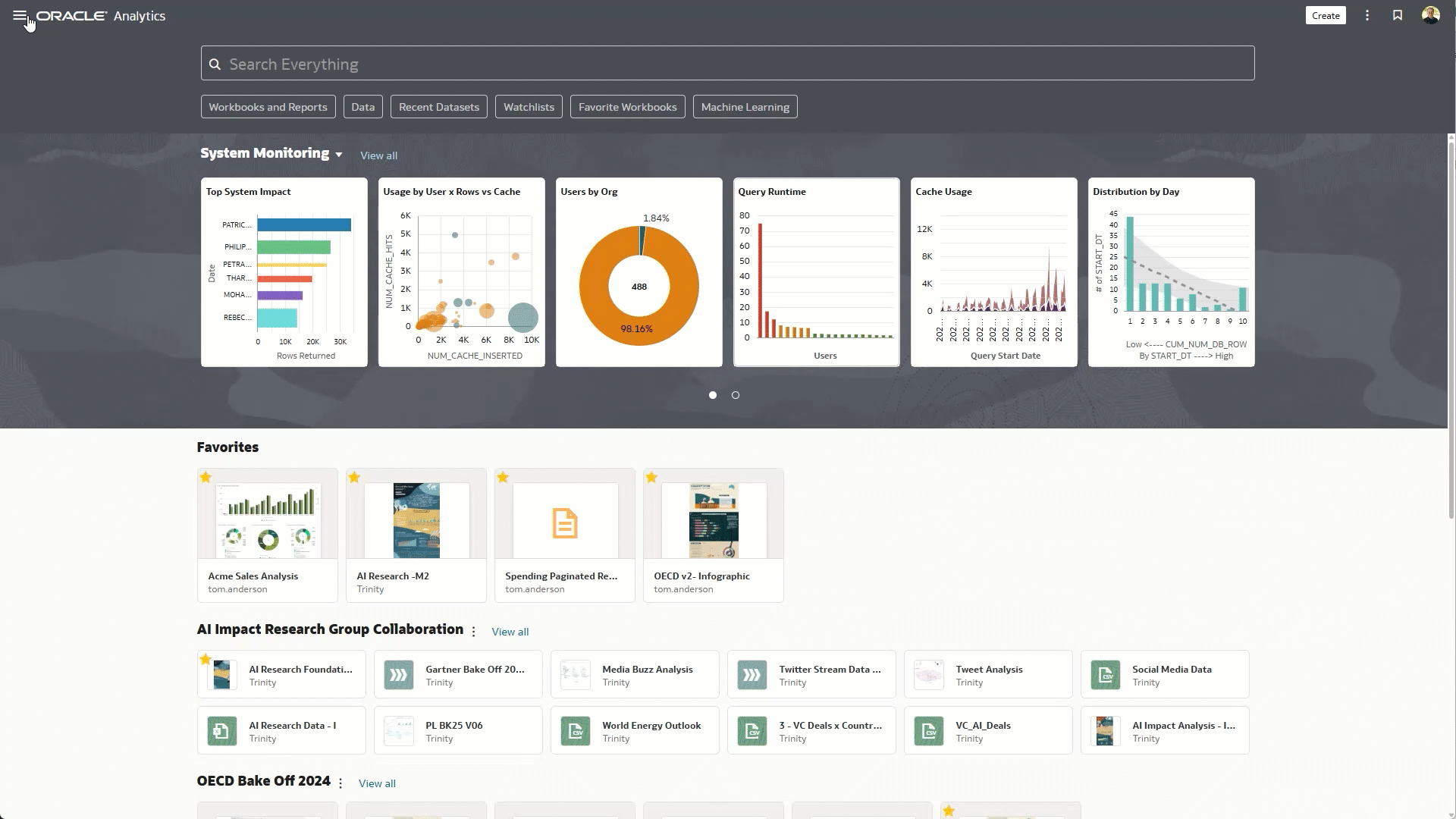
“With the Oracle Analytics AI Assistant now enabled on subject areas, anyone can explore trusted data just by asking questions—getting fast, accurate insights while staying within secure, governed guidelines. It’s analytics made easy, so teams can focus on decisions, not data wrangling.”
Jacques Vigeant, Vice President, Oracle Analytics Product Management
Exploring, dashboarding, and storytelling
The March 2025 update brings dashboard authors and consumers new visualization possibilities. The ability to communicate insights swiftly and efficiently is improved with the introduction of a native gauge chart type, shown in Figure 2, with options for customization of this circular or semi-circular visualization. This striking chart will help make metric status immediately obvious to report consumers, as will the introduction of negative percentage value displays. Users will now be able to upload more custom layers for their map visualizations, as this update enables the use of external storage if the total size of map layer uploads exceeds that available in internal OAC storage. This requires no additional configuration or resource.
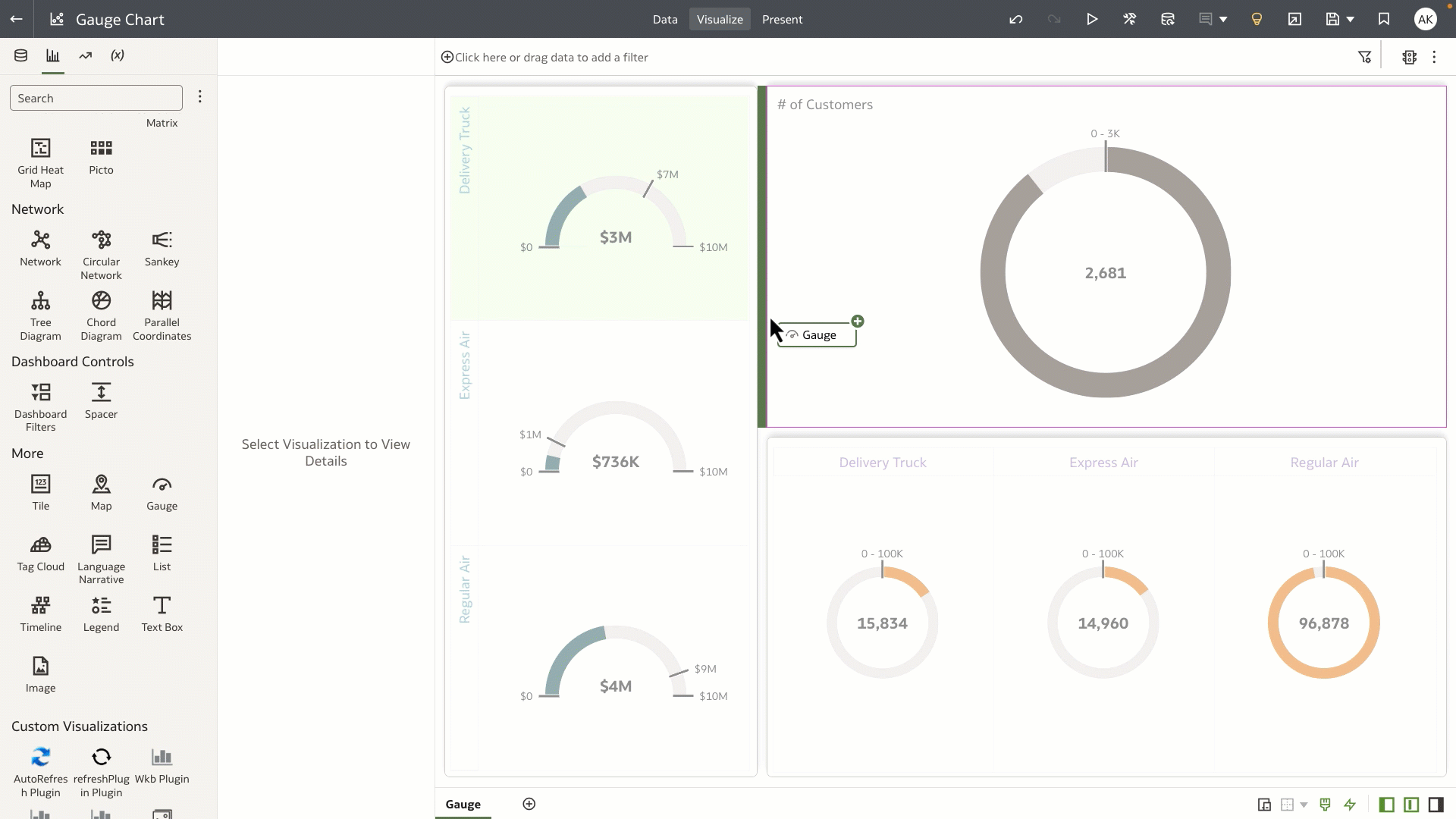
With this update, Oracle Analytics continues to help consumers drive action from the insights they consume, by providing the ability to display columns in tables or pivot tables as a link, shown in Figure 3. This feature creates a single-click experience for consumers to invoke data actions directly from the data they are viewing.

The March 2025 update expands customization options of workbooks in OAC. Custom label names for Totals will allow authors to create more meaningful canvases for their users, and a new interactive tooltip enables consumers to quickly perform contextual actions on selected data points like Keep and Remove Selected, Drill Down, and Data Actions, as shown below in Figure 4.
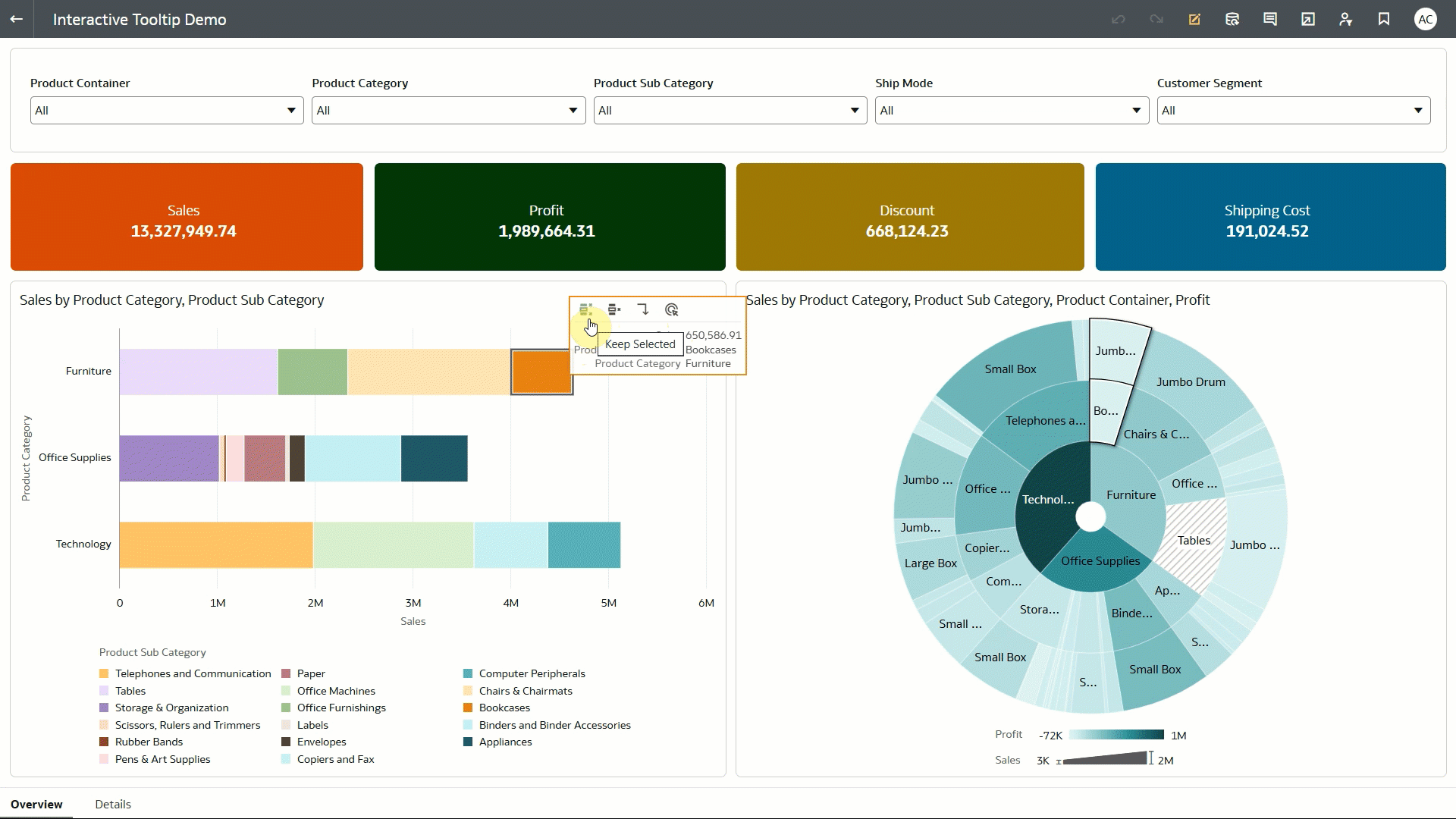
Users will also be able to save multiple configurations of persisted workbook filters, as shown in Figure 5. By saving the filter configurations at different moments in a workbook lifecycle, users can seamlessly apply a different combination of saved filters to their dashboards and switch between them. In a matter of clicks, consumers can toggle between the latest set of filters applied to a dashboard, the original filter selections made by the workbook author, and even a custom configuration created by the user themselves.
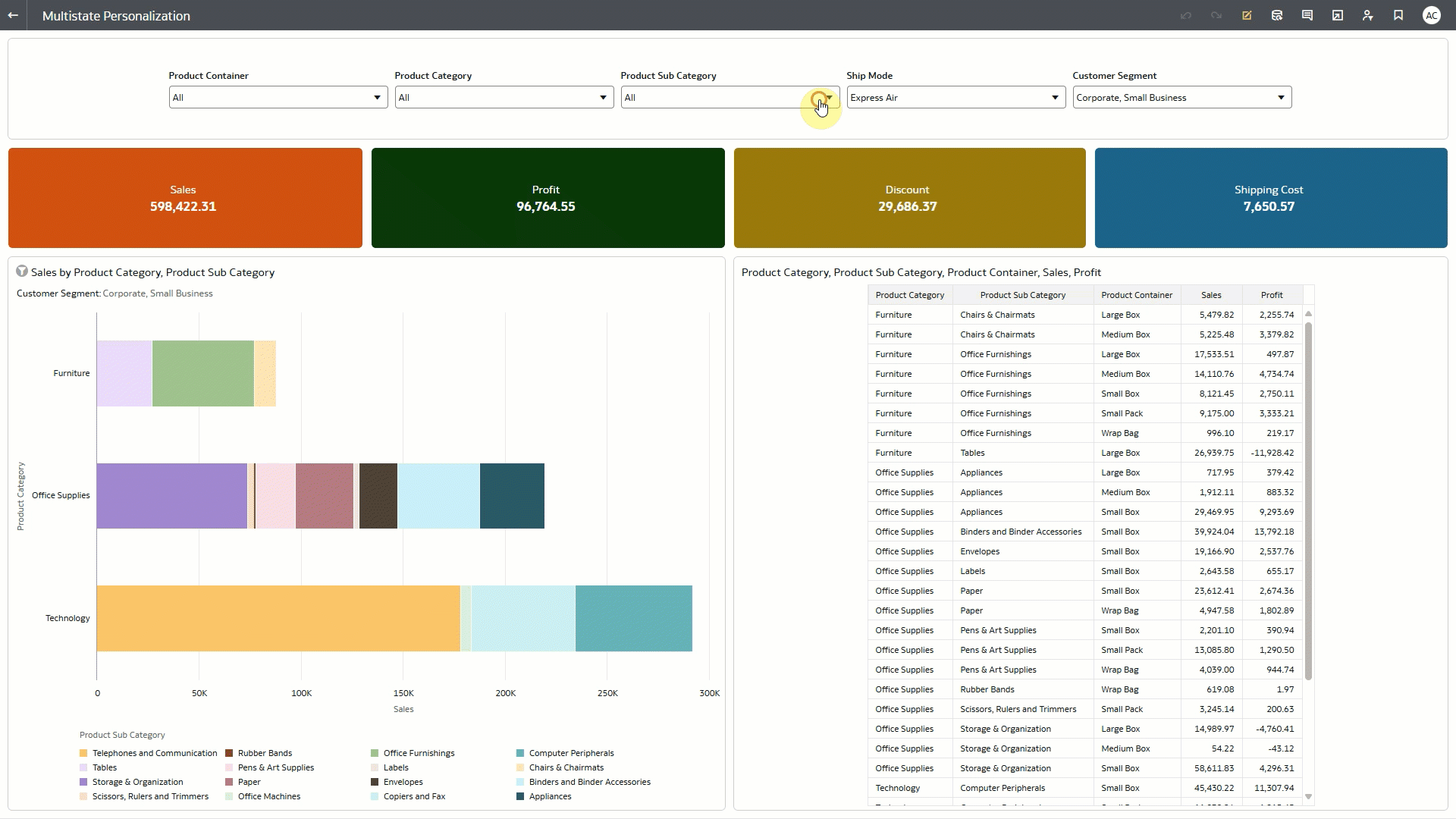
Organization and content curation within OAC are upgraded with this update. Alphabetical sorting of MyCalc folders will provide easier navigation and swifter analysis experience for users. Custom groups on the Homepage can include URLs, as shown in Figure 6. This means administrators and users can combine curated groups of related analytics content with links to external sites relevant to the analysis. With this feature, analysts can create streamlined business workflows whereby the relevant datasets and workbooks are located in proximity to links leading directly to the applications, like Fusion ERP or Salesforce, and sites in which consumers need to take insight-based action.

Data connectivity, modelling, and preparation
The March 2025 update introduces enhancements that offer improved data enrichment, faster performance, and broader integration capabilities. The Oracle Analytics Semantic Modeler now provides more robust Git support, allowing integration with repositories on private networks through private access channels. In addition, Git repositories not ending in .git are now supported.
Administrators can now provide their analytics authors and consumers with enriched data for more meaningful analysis by creating custom knowledge for Dates, as shown in Figure 7. Users can create custom knowledge around meaningful business time frames such as Fiscal Periods, Key Dates, Seasons, Holidays and more. These will then be available as enrichment recommendations in the Dataset Editor and as real time enrichments in the workbook data elements tree, helping analytics authors create high-value content in context for business consumers.
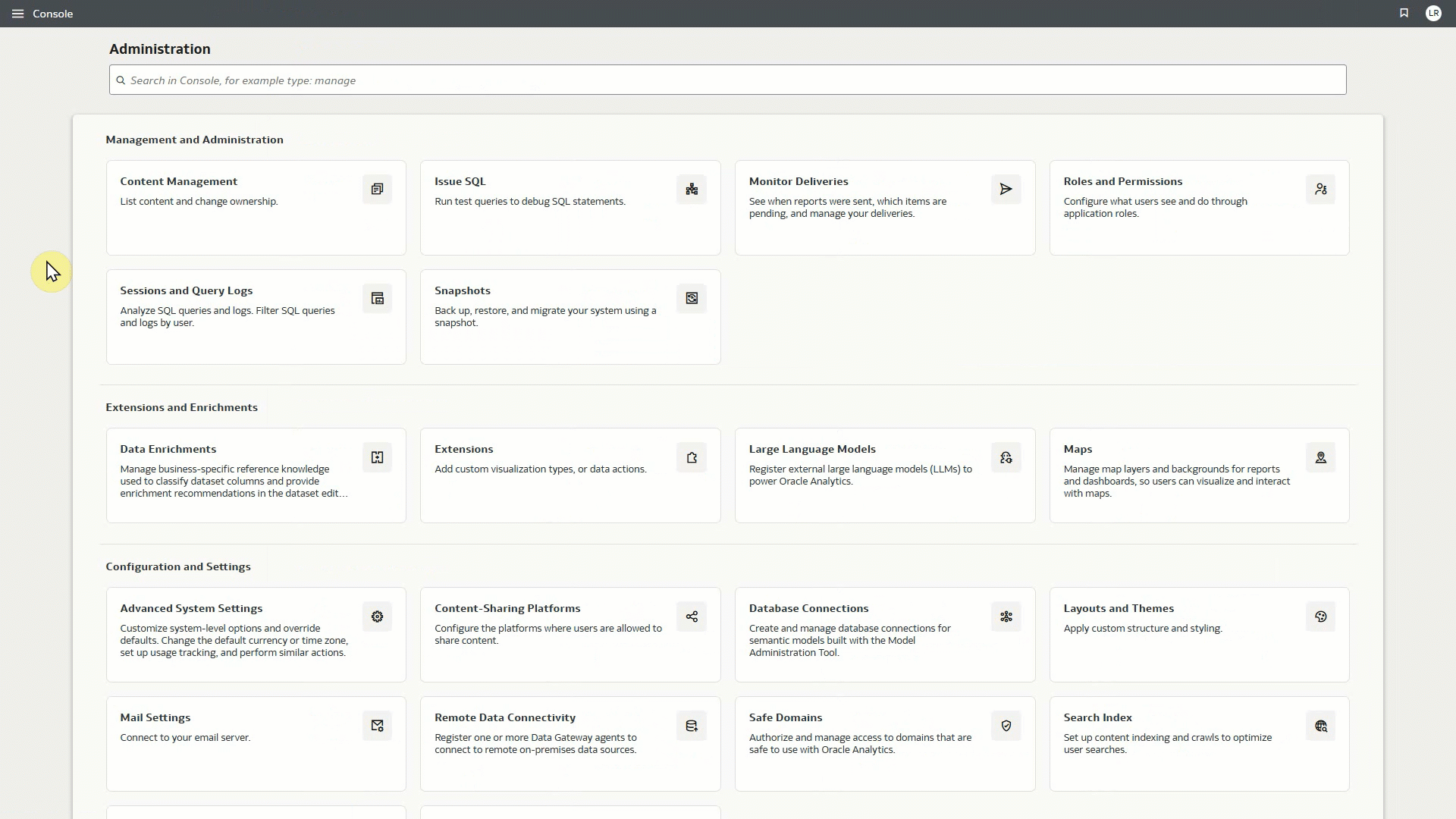
Performance is enhanced by the addition of the extracted data access mode for dataset queries. This mode requires the data reload job to complete before letting users access or view recent modifications in the dataset, helping maintain freshly cached data. Extracted data access mode enables authors to ensure that in-memory caching of datasets is completed before allowing queries to provide consistent performance for workbooks. For full details, see the documentation.
Key takeaways
The March 2025 update provides advancements for users across the data analysis process. Business users can apply the Oracle Analytics AI Assistant to their subject area data, while administrators can provide deeper business context around dates for data enrichment. New visualization and customization opportunities come to workbook authors and consumers, with continued emphasis on driving action from data insights through embedded URLs across the Oracle Analytics experience.
For more information:

